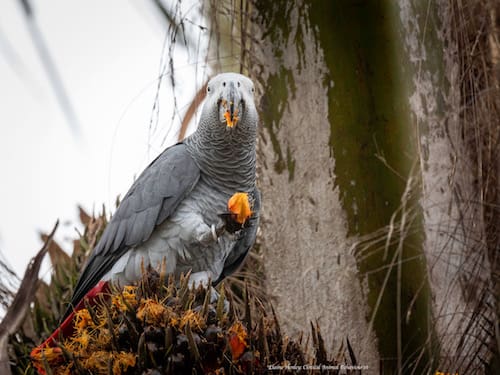
In the early 2010s, thousands upon thousands of Grey parrots were being trapped in the wild, stuffed into boxes and sent to breeders and pet dealers around the world. Uganda was one of the many countries through which wild parrots flowed out of Africa to the rest of the world and in 2011 the Uganda Wildlife Authority (UWA) took decisive action, leading to two seizures each of over 100 Grey parrots.
The World Parrot Trust (WPT) supported UWA and the Uganda Wildlife Conservation Education Center (UWEC) in the development of a management plan and provided technical support and emergency funding for the construction of temporary aviaries. Following quarantine, medication and health checks, the parrots judged fit for return to the wild were released by UWA and UWEC in Kibale National Park, a protected area of lowland forest in western Uganda (learn more by watching this video and reading about it in the WPT magazine PsittaScene). Following standard practice, each bird was fitted with a leg ring so that they could be monitored as they made their way in the wild.
Now fast forward eight years to an eco-lodge on the edge of the forest, just a few kilometres from where these parrots were released. A group of parrot enthusiasts from around the world are snapping photos of a handsome flock of Grey parrots gorging on palm fruit. Imagine the excitement when one of the parrots was spotted sporting a ring. Elaine Henley, a Clinical Animal Behaviourist who took the photo above, named this individual “Mshindi” (Swahili for “Survivor”) reflecting this parrot’s journey.
There was little doubt that this was one of the same parrots that were released eight years before and it’s incredible to think what this bird has been through. Plucked from his forest home, Mshindi had been stuffed in an overcrowded box and transported hundreds of kilometres before being rescued, held as evidence, quarantined, rehabilitated and then given a second chance in the wild. Once free Mshindi then faced all the usual trials of being a wild parrot – escaping predators, finding food and navigating parrot society. A survivor indeed!
Dr Julius Kasigwa, a veterinarian at UWEC, who played a key part in the rescue operation and the protection of Grey parrots in Uganda, was impressed by Mshindi’s defiant pose: “It’s as if he’s saying ‘Here I am, still alive and enjoying nature, see my ring, I’m eating the fruits of nature’ “.
A week later a parrot with a ring (likely Mshindi) was spotted again; but instead of stuffing his face with palm fruit, this time he was cavorting with another bird, playing and preening and looking every bit a part of a well bonded pair. Not just surviving – but thriving.

Subsequent research using video footage gleaned from previous visitors to the area has revealed that multiple ringed birds have been showing up in the same tree for some years. Information like this is vital for building a picture for how parrots seized from illegal trade are faring in the wild, and informing how rescued parrots can best be managed. We encourage other visitors to the area to look carefully for ringed parrots and share their photos with WPT.
The project, along with a further release in 2013, received a huge amount of media attention in Uganda and provided a unique opportunity to communicate messages to the general public about the devastating impact of the trade. Similar to other East African countries, it is illegal to keep Grey parrots as pets in Uganda and there have been no large seizures of Grey parrots in Uganda in recent years. In 2016 Uganda, stood alongside other range states from across East Central and West Africa in calling for the transfer of Grey parrots to CITES Appendix I. This long overdue move placed tight restrictions on the international trade and ended all commercial trade of wild Grey parrots.
The sight of Mshindi posing defiantly is not just a tribute to the hard work invested by Uganda in prioritizing the lives of these birds and the recovery of the species, but also to the efforts of governments, NGOs and dedicated individuals working across Africa to end the trade and protect habitat for these fantastic but threatened birds.
Acknowledgements: WPT would like to say a big thank you to the staff of UWA and UWEC, Kibale forest communities and all the many others who have worked to support Grey parrot conservation in Uganda. Huge thanks also to Elaine Henley and Lori DeLeo of ‘Shades of Grey Parrot Tours’ and Johnnie and Agnes Kamugisha, for their support for WPT, their efforts to protect Grey parrots in Uganda and their diligent observations which led to this discovery.
Help Save Parrots Like Mshindi!
Can we count on your gift to help see more success stories like Mshindi’s?
Your donation will help parrots like Mshindi caught in trade in Africa as well as in other countries such as Indonesia, Bolivia, Peru and Brazil, where the fight to end trade continues.
Plus, when you donate by Jan 31 your gift will be matched, doubling your impact for parrots!

